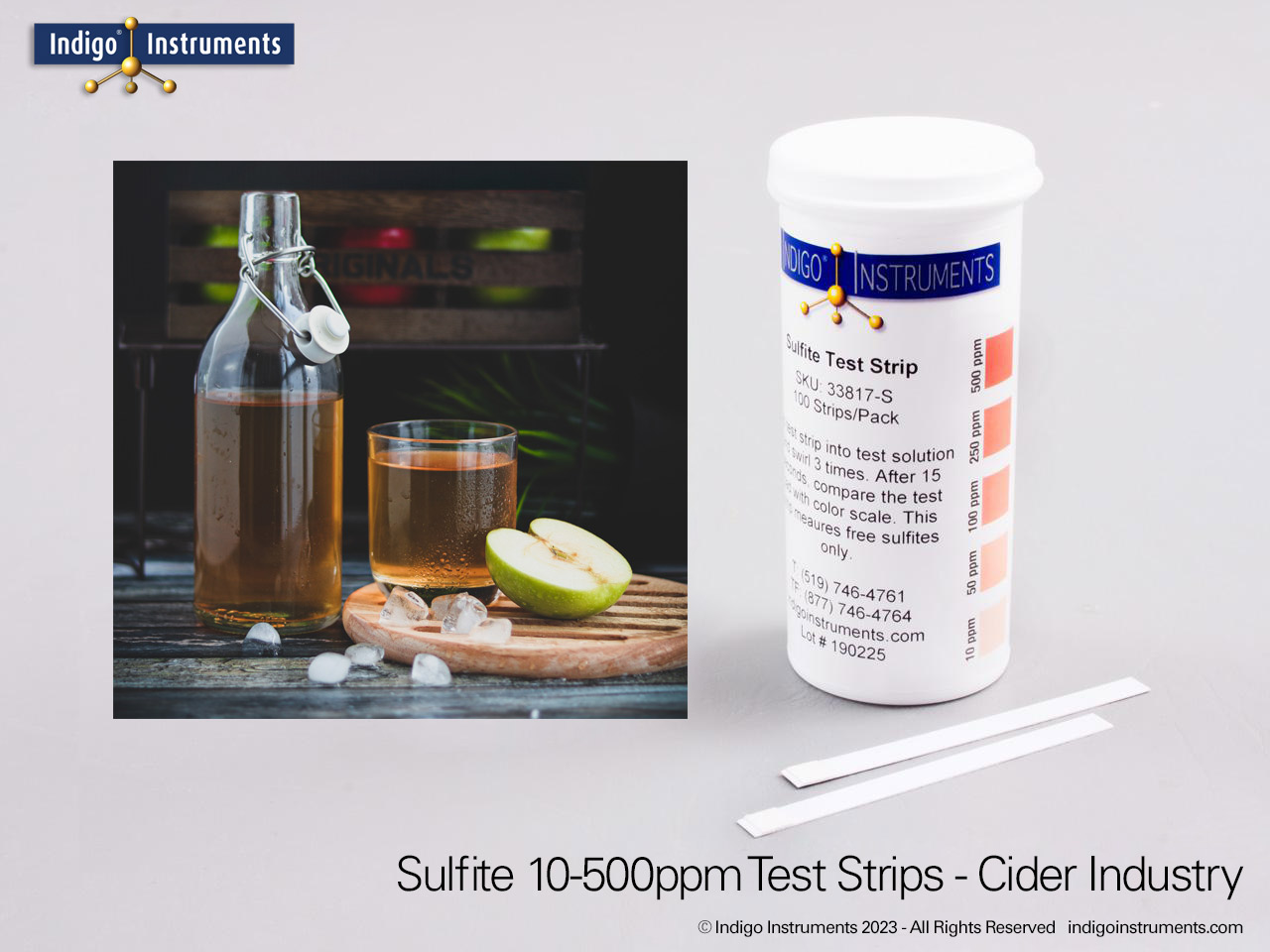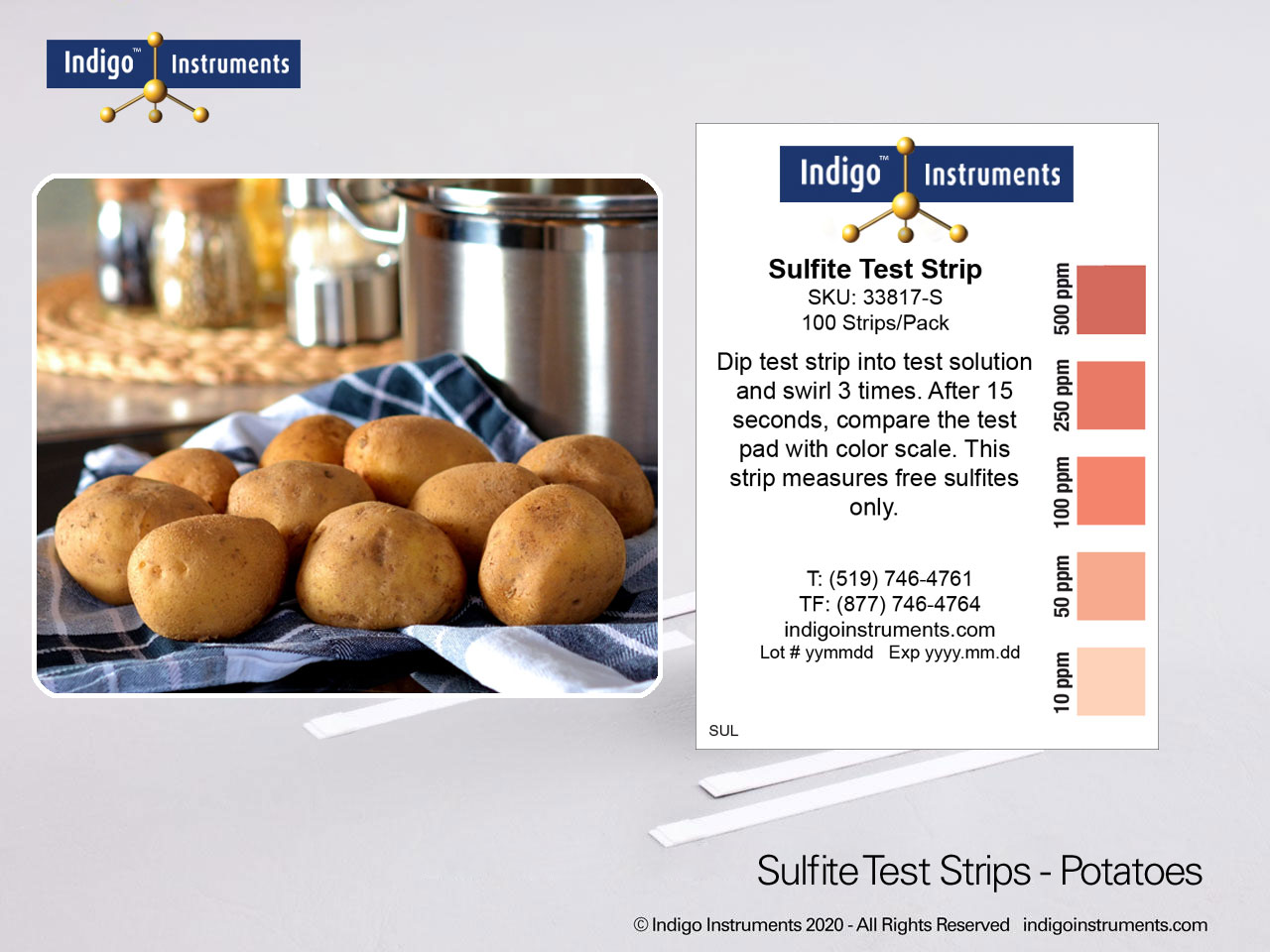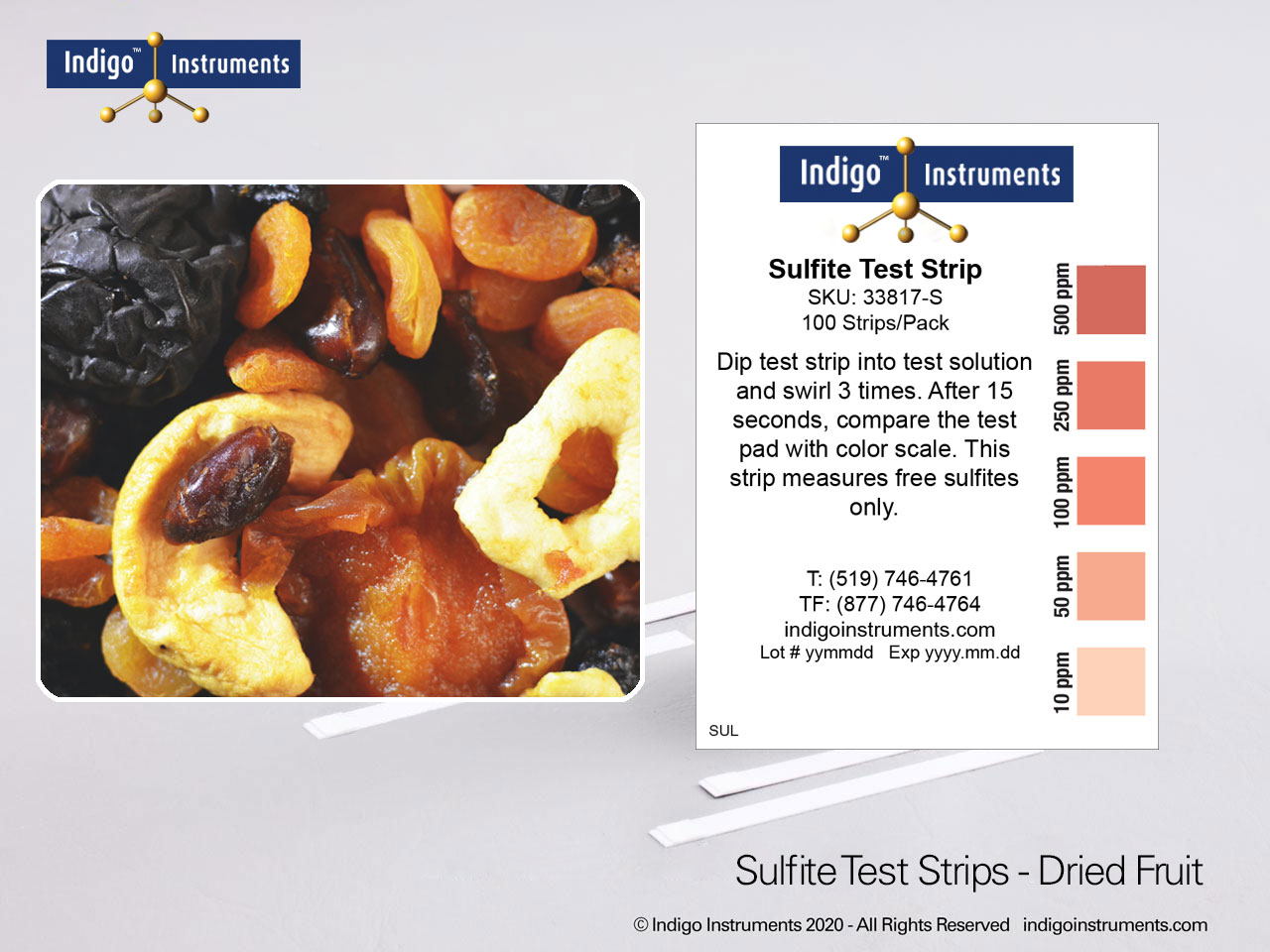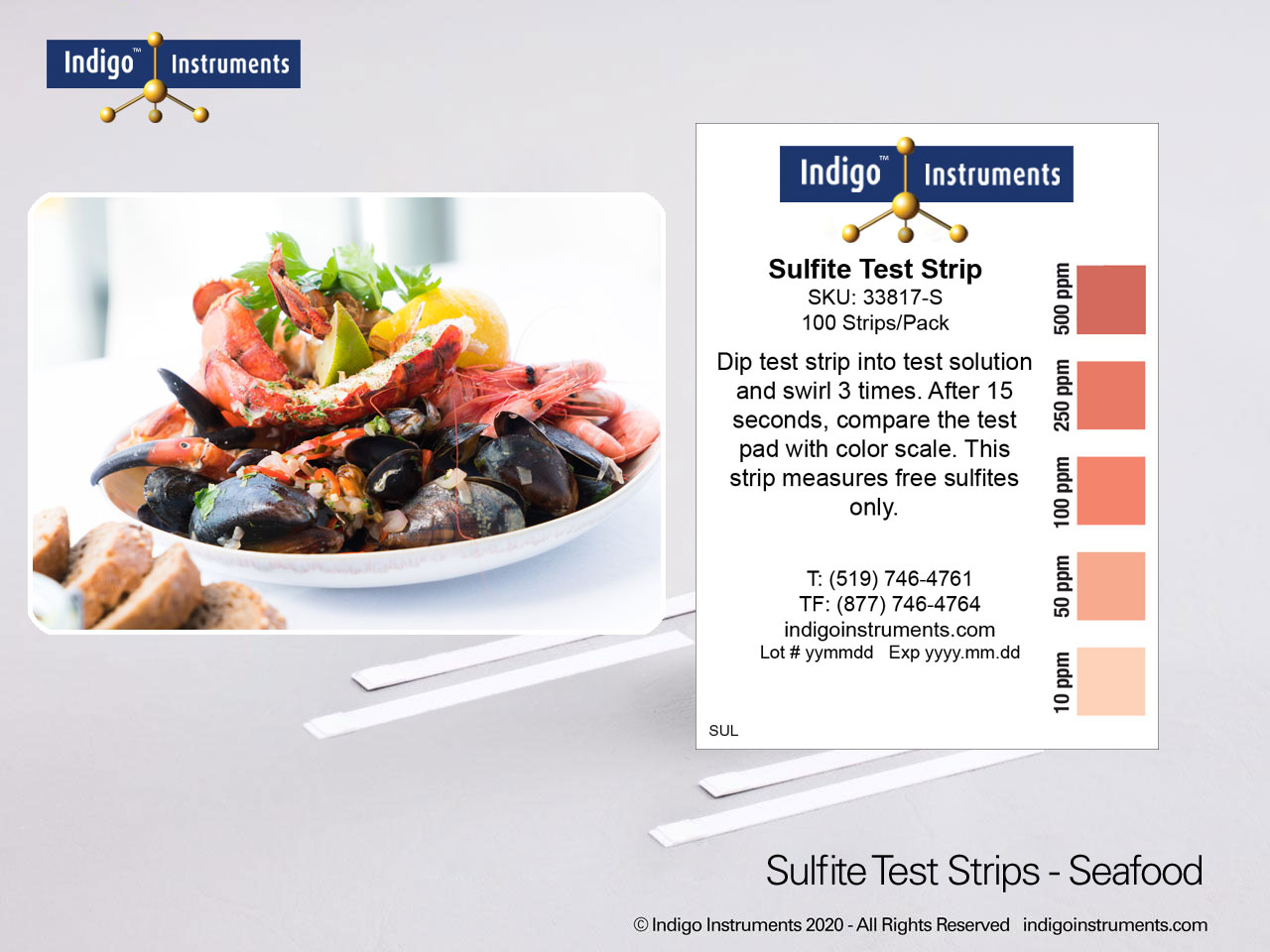Testing Sulfite Levels in Apple Cider
SKU: 33817-S
Learn how to test sulfite levels in apple cider using simple test strips. Understand natural sulfites, low-sulfite cider, pH-dependent dosing, and how to manage free SO3 ion concentration for stable, great-tasting cider.
Sulfites play an essential role in cider making, balancing microbial stability, flavor preservation, and shelf life. While small amounts occur naturally during fermentation, most makers add sulfites in the form of potassium or sodium metabisulfite to prevent oxidation, maintain freshness, and ensure consistent results. Testing sulfite levels helps cider makers-from beginners to experienced hobbyists—control quality throughout the fermentation and bottling stages.
The effectiveness of SO3 ion depends strongly on pH. Lower pH means less sulfite is required for microbial protection. The typical targets for home cider makers are:
- pH 3.0-3.3: add ~50 ppm sulphite
- pH 3.3-3.5: add ~100 ppm sulphite
- pH 3.5-3.8: add ~150 ppm sulphite
Monitor your cider with confidence using Indigo® sulfite test strips & pH 3–6 test strips, and calibrated droppers. Whether you want traditional sulfite protection or low-sulfite, minimally processed cider, accurate testing helps you control flavor, stability, and shelf life from pressing to bottling.








Thanks for letting us know. This might interest you since you are in quality control: Can 10ppm of Sulfite & Quat Really Mean Zero?